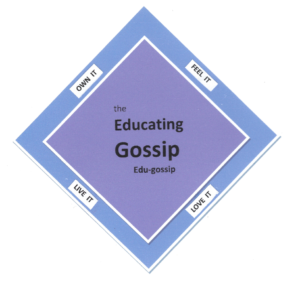
The Educating Gossip™
This is the second in a series of editorials discussing mindfulness research and the Clark Unitive Effect (also known as Oppositional Cultural Practice Theory). The Clark Unitive Effect postulates a series of actions—analysis, acceptance, and awareness—that can lead to individual psychological growth, improve understanding of the systems and structures of society, reduce decision-errors, and focus life’s energy into creative peaceful acts that promote healing. This acceptance of and commitment to helping others becomes a spiritual or contemplative praxis (Clark, K.E. 2016, 2018).
OWN IT!
When people from across academic fields and disciplines come together to understand a phenomena in its totality, they experience transdisciplinary research. They bring together their various lenses to take an up-close, fully illuminated examination of an event or phenomenon, identifying new areas for research and achieving deeper understanding. Cyrille Rigolot proposes that transdisciplinarity become a new discipline and considered as a way of being (Rigolot, 2022). His suggestion aligns with the Clark Unitive Effect (also called oppositional cultural practice theory), a transdisciplinary theory positing an explanation of events and phenomenon that can fulfill the need for self-transcendence and that becomes a way of being (Clark, 2016, 2018).
The growing recognition of transdisciplinarity’s powerful nature offers researchers valuable opportunities for collaboration. Transdisciplinary examination of an issue, from many points of view, using many data sets, provides insight to dispel individual and discipline bias and to reduce thinking and decision-making errors. Our ability to decrease errors, especially those based on misinformation or unconscious bias, is called upon now more than ever, as Rigolot puts it, “to efficiently address the world’s most pressing issues…”
The Clark Unitive Effect hypothesizes insights and understanding focused on the world’s individual, group, and larger culture issues when transdisciplinarity critical analysis and positive critique are used to understand today’s unprecedented perils. Additionally, the Clark Unitive Effect submits when this attempt for understanding includes the collaboration of researchers, findings often result that point to solutions that bring peace and lessen ill-being. Furthermore, the Clark Unitive Effect suggests a way of understanding how transdisciplinarity thinking becomes a mindfulness practice. In other words, becomes a new identity, a new way of being.
While reading the Truthdig re-post of Angelika Albaladerjo’s article Are Police Helicopters Worth the Cost?, I was excited to learn of the several researchers trying to understand and solve the issues of the tax burden and the s negative impacts of police helicopters on communities. The article suggests a transdisciplinary conversation is at work to understand the event and phenomenon. I own my belief in transdisciplinarity as a pathway to understanding how collaboration can address both local and global issues.
“The growing recognition of transdisciplinarity’s powerful nature offers researchers valuable opportunities for collaboration”
FEEL IT!
As I read the police helicopter article, the “being cognition”, emotions of glee, happiness, excitement and hope emanated from the core of my conscious mind. The feelings in my body of energy, a kind of vibrating, or soft oscillation, gently moved me from side to side. A faint ‘Om‘ moved my lips as I practiced mindful reading.
Other sections of the article activated in me deficiency cognition, emotions of anger, helplessness, worry, and fear. I was reminded of my own experiences with police helicopters and their seemingly endless circling above my neighborhood, both day and night. The muscles in my shoulders began to tense. Yet, because I am a contemplative/spiritual practitioner, I know how and begin to take care of those emotions first. Using the energy of mindfulness, I found a place of calm and peace, tapping into the being cognition emotions to regulate this response. I remembered to take slow, deep breaths–to practice mindfulness breathing—recalling that I am here now in a relaxed frame of mind, and thus I read the article to completion. The article solidified my hope and faith in humanity, and my work on the Clark Unitive Effect.
If you have never experienced helicopter policing similar to Beni Benitez’s account in the article, the issue remains critical for the larger culture. The troubling impact of this policing strategy on mental, emotional and physical health, and arguably frivolous spending at all levels of government, has motivated individuals to act. The article interviewed the team amassing an array of data, across fields of knowledge and experience. As a result, the reader gains a deeper insight and understanding of what, why and how a transdisciplinary team can collaborate. It’s possible the individuals engage in mindfulness reflection as they collaborate with the author to inform the public about this growing local and nationwide issue. Additionally, the research study focus is suggestive of the propositions and hypotheses of the Clark Unitive Effect in many aspects. For example, the historical local and global positionality focus; the positive critique and critical analysis of an early study of the helicopter program to uncover and understand any bias in the decision to create the program; exploring the society and social behavior that develop as a result of the program; and looking for alternative goals that might actually result in less crime and be more cost effective.
In our communities, we may not be responsible for the consequences of neocolonial capitalism, but we can step-up in any of our capacities, be accountable, and be engaged with other concerned individuals, groups, and the larger cultural system. Just as the aforementioned individuals have modeled for us, together we can create enduring positive change (Chomsky & Waterstone, 2020).
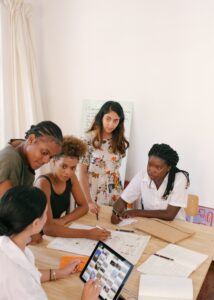
LIVE IT!
Researchers of contemplative practices, including of course mindfulness, will find that by teaming up with a transdisciplinary effort, adding their data gathering skills and inquiries, can add another element of consideration during the decision-making process that may lead to improved human health and community peace. They can direct their research to include the propositions of the Clark Unitive Effect for example, critical analysis of unhealthy social impacts, specifically in overcoming helplessness supported by mindfulness practices; practicing being by calming deficiency emotion like fear, anger and wrong mental formations while engaged in resolving conflict in the process of forming new peaceful solutions; practicing mindfulness and unitive mental formations, understanding there is no separateness, no individuality, only oneness, to support emerging mutual understanding and equanimity; and so much more. Individuals can direct their research in this contemplative manner, avoiding the “valley of death,” where translating research advances into practical applications never fully realizes its potential in the larger culture from private funding to public funding (Murphy& Edwards, 2003) or from basic science discoveries to human trial studies (Coller & Califf, 2009).
The Clark Unitive Effect provides hypotheses and propositions for further focused research of contemplative practices. With this positional, up-close focus, researchers not only gain personal experiential contemplative practice but also actively show how mindfulness and other contemplative practices support conflict resolution, provide healing and peace, can help overcome fear, and find courage to engage in active compassion (Barclay, 2016). Now, the research has contextual importance and relevance. The Clark Unitive Effect supports bridging the gap between research and application.
Yes! Imagine what it would feel like to have your mindfulness research discussed as a major contribution in the context of a decision to change cultural behaviors that had caused suffering and ill-health. A Clark Unitive Effect focused mindfulness research inquiry has great potential. The transdisciplinary research team would encounter a peak experience (Clark, K.E. 2016, 2018). The participation would deepen one’s own personal spiritual journey, while at the same time allow contemplative practice to fully realize its potential to the larger culture.
Further, because the Clark Unitive Effect proposes a transdisciplinary research approach including the individual, community, and larger society on its team, the effort is about real world impacts, the findings and suggested interventions are therefore more likely than not to result in decisions free of noise and bias. Purposeful, effective actions that reduce suffering and increase peace may very well come into being.
“The Clark Unitive Effect predicts that transdisciplinarity, along with community and larger culture engagement as part of the team, can traverse the ‘valley of death.'”
LOVE IT!
According to Dr. Attila A. Seyhan, “The crisis involving the “translation” of basic scientific findings in a laboratory setting into human applications and potential treatments or biomarkers for a disease is widely recognized both in academia and industry” (Seyhan, 2019). Translating transdisciplinary research is also increasingly being recognized as difficult to accomplish (Meslin & Cambon-Thomsen, 2013). But I am not discouraged. In fact, I am elated. The Albaladejo article is an example of recognizing the importance of transdisciplinary research, translating the research design, and clearly communicating the potential for compassionate government and political decisions to result that can bring about improved human health and community and societal peace and well-being.
The Clark Unitive Effect predicts that transdisciplinarity, along with community and larger culture engagement as part of the team, can traverse the “valley of death.” We don’t know how Albaladerjo as a reporter came to be part of the conversation, yet here we get to witness journalists, researchers, and the community engage in contemplation, self-examination, fellowship, and reflection, forms of spiritual or contemplative practice. They are inviting us to participate with them in these practices. The vexing bond of power and its pernicious proclivity for the deployment of tools that cause suffering is meditated upon. So many individuals, communities, and the larger culture, by virtue of reading this article, can now understand, discuss, and be encouraged to take interest in this phenomenon.
I love it! Transdisciplinarity is gaining the attention of researchers. In concert with the Clark Unitive Effect hypotheses and propositions, transdisciplinary research holds the possibility of healing individuals, communities and the larger culture and restoring peace. I love that each day I practice connecting my research to action in the world; I traverse over the ‘valley of death’ and I experience confidence to act with courage, even in the face of uncertainty. Albaladejo’s article reminds us that we are not alone in this experience. We move as individuals, communities, and as a larger culture toward lasting social change that is sustaining physical and emotional health and reflecting the wonder and joy of creation that is all around us.

The Educating Gossip™
The Educating Gossip is a researcher and spiritual director. They write about how the Clark Unitive Effect bridges contemplative research to contemplative practices, rescuing mindfulness research from the valley of death. Staying positive and advancing the Clark Unitive Effect underscores their writing and life. The frame OWN IT, FEEL IT, LIVE IT, LOVE IT is used to provide a first person narrative, inviting the series reader to critically examine their own beliefs, feel the emotions and effects on the body, live practices that recognize and take care of body, speech and mind; and love generating the energy of mindfulness in every moment.
“That [mindfulness] energy allows us to be aware of what is going on; going on in our bodies, going on in our feelings, going on in our perceptions—in our mind and going on around us, in the world.” Thich Nhat Hanh
References
Albaladejo, A. (2022, November 29). Are Police Helicopters Worth the Cost?
As advocates and academics question the impact of flights over neighborhoods, police departments lack persuasive evidence of crime-fighting effectiveness. Capital & Main. https://capitalandmain.com/are-police-helicopters-worth-the-cost
Barclay, E. (2016, November 22). A Buddhist monk explains mindfulness for times of conflict. Vox. https://www.vox.com/science-and-health/2016/11/22/13638374/buddhist-monk-mindfulness
Chomsky, N., & Waterstone, M. (2020). Consequences of capitalism: manufacturing discontent and resistance. Haymarket Books
Clark, K. E., (2016). Critical Race Theory, Transformation and Praxis. Southwestern Law Review, Rev. 45, 795-823. Full text, open access online
Clark, K. E., (2018). Demarginalizing the Intersection of Spirituality and Law: Oppositional Cultural Practice Theory, Self-Transcendence, and Social Change. Western New England Law Review, 40, 225-255. Full text, open access online
Coller BS, Califf RM. Traversing the valley of death: a guide to assessing prospects for translational success. Sci Transl Med. 2009 Dec 9;1(10):10cm9. doi: 10.1126/scitranslmed.3000265. PMID: 20368156; PMCID: PMC2879158.
Meslin, E. M., Blasimme, A., & Cambon-Thomsen, A. (2013). Mapping the translational science policy ‘valley of death’. Clinical and translational medicine, 2(1), 1-8.
Murphy, L. M., & Edwards, P. L. (2003). Bridging the valley of death: Transitioning from public to private sector financing. Golden, CO: National Renewable Energy Laboratory.
Rigolot, C. (2020). Transdisciplinarity as a discipline and a way of being: complementarities and creative tensions. Humanities and Social Sciences Communications, 7(1), 1-5.
Seyhan, A. A. (2019). Lost in translation: the valley of death across preclinical and clinical divide–identification of problems and overcoming obstacles. Translational Medicine Communications, 4(1), 1-19.
Thich Nhat Hanh (2007, September, 20). Clips / What is mindfulness? Plum Village Organization. https://plumvillage.org/library/clips/what-is-mindfulness/
Related Posts

Mediating Mindfulness-Based Interventions with Virtual Reality in Non-Clinical Populations: The State-of-the-Art (Failla et al., 2022)
By providing an immersive, engrossing, and controlled visual and auditory experience in which participants can practice mindfulness techniques, Virtual Reality (VR) systems can create immersive, ecologically valid, first-person experiences that can even tap into physiological reactions that align with real-world experiences.

Trait Mindfulness and Relationship Satisfaction: The Role of Forgiveness Among Couples (Roberts et al., 2020)
The researchers were interested in understanding if forgiveness acts as a mechanism by which mindfulness relates to relationship satisfaction. They speculated that being mindful would allow individuals to be aware of their own and their partners’ emotions in a non-judgmental and non-reactive way. The increased awareness would make people more forgiving of partner transgressions, thereby enhancing relationship satisfaction.

Exploring the Nexus between Mindfulness, Gratitude and Wellbeing Among Youth with the Mediating Role of Hopefulness: A South Asian Perspective (Ali et al., 2022)
Emerging studies are highlighting the effectiveness of mindfulness, gratitude and hopefulness as positive psychological tools in helping people cope with anxiety and stress. These practices have also been considered beneficial in enhancing psychological health and well-being.

An electrophysiological investigation on the emotion regulatory mechanisms of brief open monitoring meditation in novice non-meditators (Lin et al., 2020)
Despite growing knowledge that mindfulness meditation can enhance emotional wellbeing, very little is known about how it all works. How exactly does the act of meditation help us deal with the emotional rollercoaster of everyday life? Is mindfulness training actually “transferrable” to real world situations? What’s going on in the brain? Can we even measure it?

Self-compassion, quiet self, and the brain (Liu et al., 2020)
How does self-compassion protect depressed adolescents? Quieting the self may be the key.

When Less is More: Mindfulness Predicts Adaptive Affective Responding to Rejection via Reduced Prefrontal Recruitment (Martelli et al., 2018)
A study led by Alexandra Martelli investigated whether more mindful individuals (based on self-report measure scores) would respond to social rejection with less distress and if certain neurological mechanisms in the brain’s prefrontal cortex can potentially explain the role of mindfulness in reduced social distress.

Brief mindfulness session improves mood and increases salivary oxytocin in psychology students (Bellosta-Batalla et al., 2020)
A research team from Valencia, Spain recently investigated the effects of a brief mindfulness-based intervention on both mood and biological markers on a sample of health professional students.
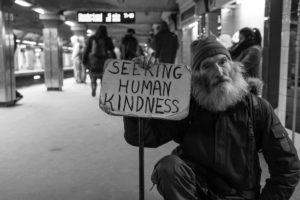
Neurophysiological and behavioural markers of compassion (Kim et al., 2020)
A new study by Kim and colleagues explored how compassion-based training can affect two self-regulatory styles and its relationship to neural, physiological, and behavioral responses.
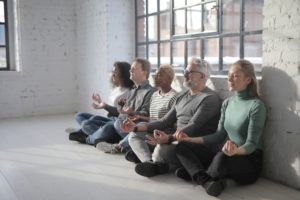
Yoga and Mindfulness as a Tool for Influencing Affectivity, Anxiety, Mental Health, and Stress among Healthcare Workers: Results of a Single-Arm Clinical Trial (Torre et al., 2020)
Torre and colleagues recruited 70 HCWs from two hospitals in Rome, Italy for a 4-week course in yoga and mindfulness.

Mindfulness Buffers the Impact of COVID-19 Outbreak Information on Sleep Duration (Zheng et al., 2020)
A team of researchers based in the perceived epicenter of the virus, Wuhan, China, recently tested whether a brief mindfulness intervention delivered through an app could be effective for reducing anxiety and protecting nightly sleep during the unfolding pandemic.

Intrapsychic Correlates of Professional Quality of Life: Mindfulness, Empathy, and Emotional Separation. (Thomas & Otis, 2010).
Mindfulness practices can enhance a therapist’s ability to intentionally and flexibly regulate attention as well as emotional reactivity which has been demonstrated to influence burnout.

Physician Anxiety and Burnout: Symptom Correlates and a Prospective Pilot Study of App-Delivered Mindfulness Training (Roy et al., 2020)
A new study investigated whether a brief mindfulness training designed to reduce physician burnout could be delivered through a smartphone app.

Role of Yoga and Mindfulness in Severe Mental Illnesses: A Narrative Review (Sathyanarayan et al., 2019)
The current study reviewed the wider scientific literature for the role of yoga and mindfulness interventions in the treatment of severe mental illness.

A Randomized Controlled Trial Examining the Effect of Mindfulness Meditation on Working Memory Capacity in Adolescents (Quach et al., 2015)
The amount of research involving mindfulness interventions has grown exponentially; however, only in the last decade has mindfulness research involving adolescents rapidly increased.
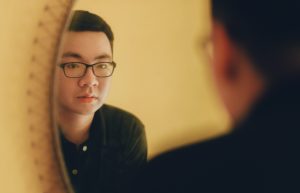
The Differential Moderating Roles of Self-Compassion and Mindfulness in Self-Stigma and Well-Being Among People Living with Mental Illness or HIV (Yang et al., 2016)
Mindfulness and self-compassion are theorized to disrupt the maladaptive repetition of negative thoughts and emotions for patients with chronic or mental illnesses, who are particularly susceptible to psychosocial distress.

Neural Stress Reactivity Relates to Smoking Outcomes and Differentiates Between Mindfulness and Cognitive Behavioral Treatment (Kober et al., 2016)
There is promising evidence that 70% of smokers would like to quit but less than 5% of unassisted attempts at quitting are actually successful.
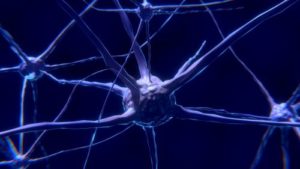
Mindfulness-Based Relapse Prevention for Stimulant Dependent Adults: A Pilot Randomized Clinical Trial (Glasner et al., 2016)
In a recent pilot study by Suzette Glasner, Ph.D. and her team at the Integrated Substance Abuse Programs at the David Geffen School of Medicine at UCLA, they evaluated the effects of Mindfulness-Based Relapse Prevention (MBRP) on reducing relapse susceptibility among stimulant-dependent adults receiving a contingency management (CM) intervention.

Long-term Mindfulness Training is Associated with Reliable Differences in Resting Respiration Rate (Wielgosz et al., 2016)
A major implication of the study suggests the distal effects of intensive retreat practice on respiration rates, a benefit not necessarily conferred by a brief, but full-day meditation session.

Examination of Broad Symptom Improvement Resulting From Mindfulness-Based Stress Reduction in Breast Cancer Survivors: A Randomized Controlled Trial (Lengacher et al., 2016)
Researchers are exploring mindfulness-based interventions as a long-term treatment options to address the multitude of symptoms after cancer has been treated.

Epigenetic Clock Analysis in Long-term Meditators (Chaix et al., 2017)
While the scientific study of mindfulness has exponentially increased over the past few decades, only recently has the scientific community focused on the effects of meditation training on biological aging.
